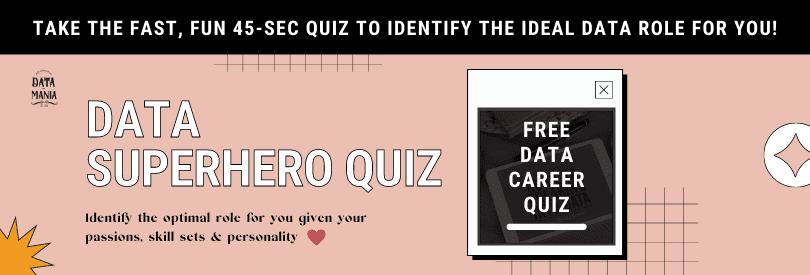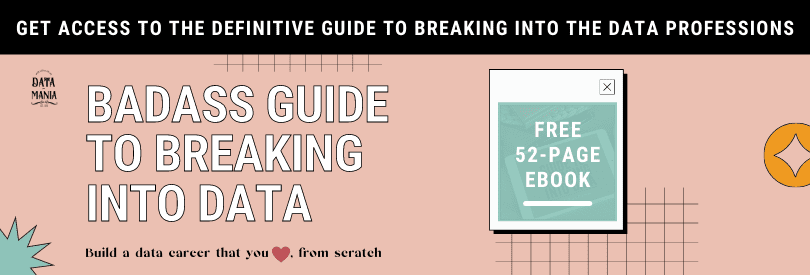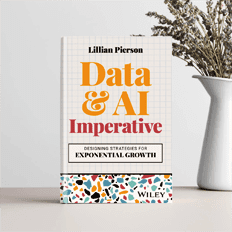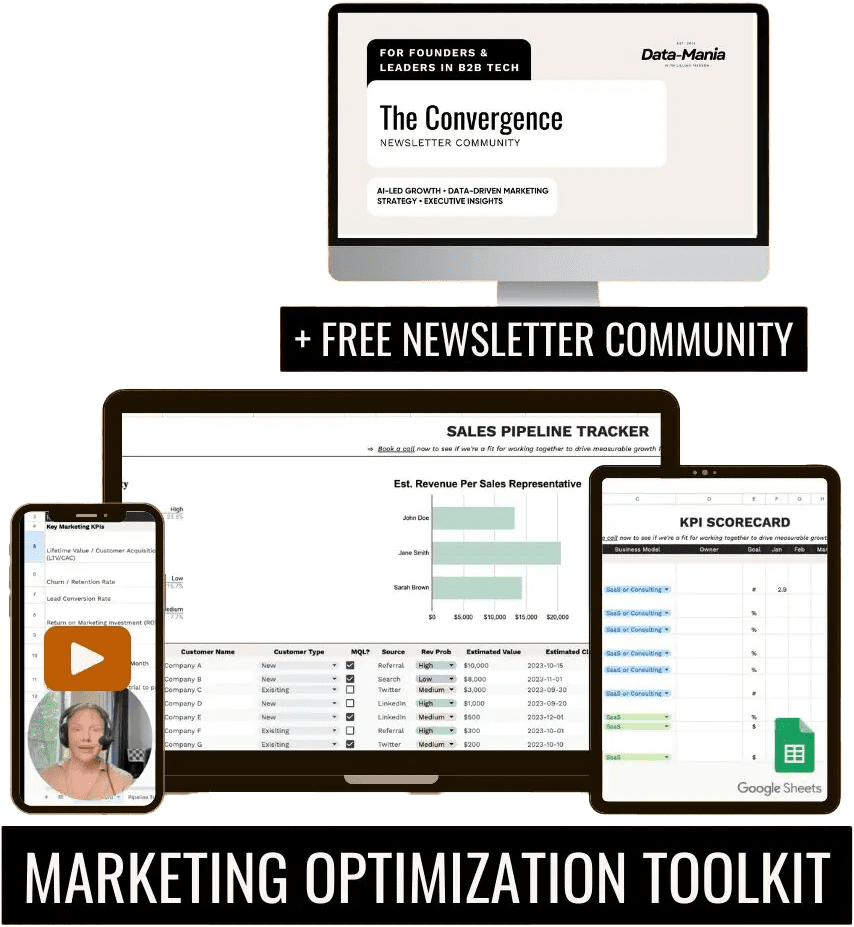How long does it take to learn how to code? Not long (at all). In this brief post, I’m going to pretend as if I was learning to code from the very beginning. I’ll show you the easiest, fastest way to go about learning to code. Make sure to read to the end of this post. That’s where I am going to share some great places where you can go to get real-life practice applying your new coding skills once you’ve learned them.
YouTube URL: https://youtu.be/fHa9xb5-JLE
If you prefer to read instead of watch, then read on…
For the best data leadership and business-building advice on the digital block, subscribe to my newsletter below. I’ll make sure you get notified when a new blog installment gets released (each week). 👇
[convertkit form=5131701]
As far as why I’m qualified to give advice on learning to code, I learned to code back in 1987 (at the ripe old age of 8) and subsequently in my “coding career” I’ve taught over 1.3 Million professionals how to code in Python. Don’t believe me, you can see the latest editions of my courses over on LinkedIn Learning here.
If you’re new around here… Hi, I’m Lillian Pierson and I support data professionals in becoming world-class data leaders and entrepreneurs.
How long does it take to learn how to code? You get to decide…
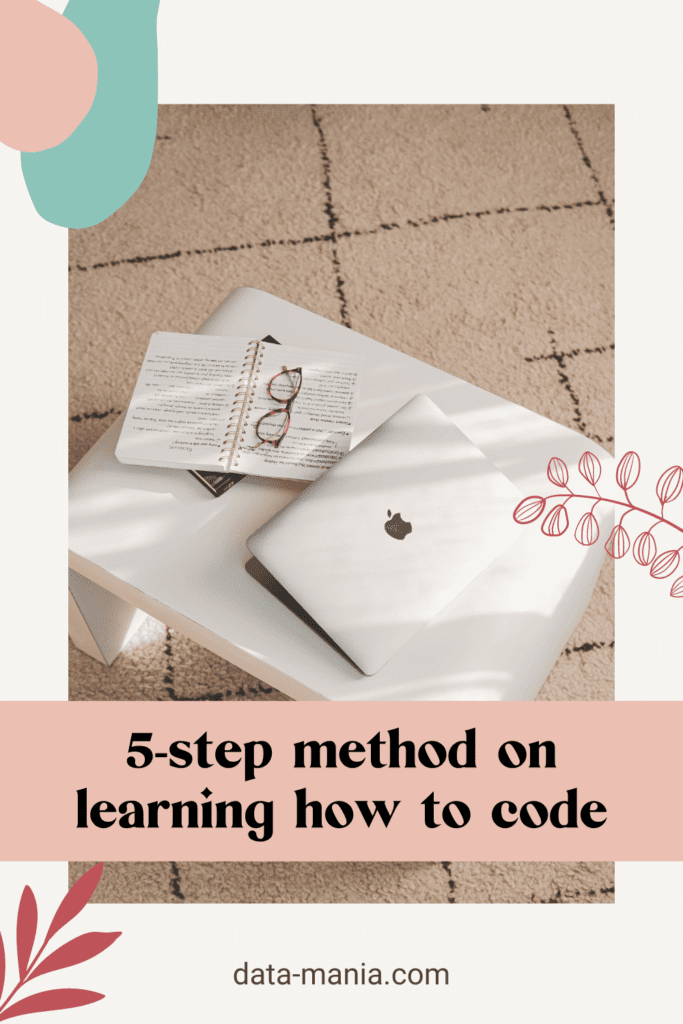 Now, obviously since I specialize in teaching people to learn how to code in order to do data science, the method I am going to teach you here will be slanted towards learning to code so that you can do work as a data professional.
Now, obviously since I specialize in teaching people to learn how to code in order to do data science, the method I am going to teach you here will be slanted towards learning to code so that you can do work as a data professional.
If I could start over, in all honesty, I would learn to code the very same way I learned how to use Python for data science back in 2012. In this post, I am showing you the exact 5 step approach I used and would use again if I had to.
You’d be surprised at the amount of flexibility you have in determining how long it will take you to learn to code. If you choose a lofty goal, you can spend years learning to code and never feel like you’ve mastered it. I don’t recommend that approach. Instead, choose an attainable goal and set a deadline for when you will achieve it.
Of course, you want to make sure that you’re not learning just for the sake of learning. You want to make sure that what you learn is actually in alignment with your aspirations, correct? So, you’ll want to start with your end objective in mind and then reverse engineer how you can get there.
Let me illustrate with a fictional example…
Step 1: Find something you want to do
Imagine that you’re looking for a job and you know that you believe in the power of data to transform businesses and improve lives. So, because you believe that this would be a fun, fulfilling and rewarding role, you decide you’ll look for a job in “Data Monetization” on LinkedIn.
At the top of the results, you see that Pinterest is hiring for “Head of Analytics and Data Science, Monetization”… so you tap into that job listing and notice that – surprisingly – the job does not have a minimum requirement for coding experience.


https://www.linkedin.com/jobs/search/?currentJobId=2516585365&keywords=data%20 monetization
As you can see, the only mention of coding in the job description is that you have “Hands-on knowledge of SQL and Python or R”.
Yes, you read that right. They are requesting that you know how to use 2 languages SQL and either Python or R.
Now, in this hypothetical situation, you don’t know anything about how to code at all… so you’re probably not going to get this exact job with Pinterest. But, if you learn to code now, you can probably get a similar role with another company later on – after you’ve learned. So, let’s go with it.
I’d love to try to help you out in figuring out your best learning goals for you. Tell me a little bit about your time constraints in the comments below, and I promise to suggest a reasonable time commitment for learning to code.
Step 2: Find your learning instrument
The next thing you need to do is to decide what you want to learn first. Don’t try to learn more than 2 languages at a time, it will just slow down your learning momentum.
Don’t try to learn more than 2 languages at a time, it will just slow down your learning momentum.
Since you don’t know anything about either of these languages, go ahead and check to see if one language is a prerequisite for another.
You Google “is there a prerequisite for learning Python?” Also, “is there a prerequisite for learning SQL?” You discover that the answer to both of these questions is “no”.
Next you need to find out which of these will be the easiest to learn…
So you Google”what is easier python or sql?” The resounding answer from the internet is that SQL is easier, so you decide to learn to do SQL first, and then Python.
Next, you need to figure out how long it will take you to get “hands-on” learning experience with SQL. The easiest way to do that is just to go over to Udemy and find a well-rated course that tells you exactly how long it will take you to complete it. When I say a well-rated course on Udemy, I mean you want it to have at least 100 ratings of 4.4 stars or above.
When I say a well-rated course on Udemy, I mean you want it to have at least 100 ratings of 4.4 stars or above.
If you can find a course that’s relevant to the job description or industry you’re aiming for then that’s even better. Let’s look back at this Pinterest job posting real quick.


From the listing, you can see that they are looking for someone to Liaison with the Head of Monetization for Engineering and Product, and you know they’re a social media company, so… if you can find a SQL course related to SaaS products, that would be great.
You go over to Udemy and search beginner courses on ‘SQL “Product”’. Low and behold, at the top of the results you find a Beginners SQL course that will show you how to use SQL to analyze product data and inventory data. It’s well-rated and relevant. Bingo!
Learn Business Data Analysis with SQL and Tableau
It includes 4-hours of lecture material. So, you probably want to give yourself 8 to 12 hours to watch it and work the examples. As a rule of thumb: When using video courses to learn how to code – give yourself at least 2x – 3x the duration time of video lectures, to apply and practice what the course is showing you.
As a rule of thumb: When using video courses to learn how to code – give yourself at least 2x – 3x the duration time of video lectures, to apply and practice what the course is showing you.
We are going to create a milestone goal for you next. But while we are over in Udemy, let’s find a relevant Python course you can learn from too. Since the job is to be the head of analytics and data science, you know you need to know how to use Python for something related to that. So you search Udemy beginners courses on “data analytics python”.
The top result comes in as 15.5-hour video course on “Machine Learning, Data Science and Deep Learning with Python” The ratings look good, but the only problem is that – When I first discovered this course, the price was set to $89.99. At $89.99, it’s pricey for an online coding course. But when I went in to grab a closer screenshot a few hours later, you can see the price had already dropped to $14.99! Pro-tip: Don’t pay more than $9.99 for Udemy courses. Most of the best Udemy courses go on sale for one week per month. And the price will be set to $9.99 then. If that’s not the price when you first go to look, just pay attention to when Udemy has sales so you can snag the course at a small fraction of the price then.
Pro-tip: Don’t pay more than $9.99 for Udemy courses. Most of the best Udemy courses go on sale for one week per month and the price will be set to $9.99 then. If that’s not the price when you first go to look, just pay attention to when Udemy has sales so you can snag the course at a small fraction of the price then.
This Python course lasts for 15.5 hours, so you probably want to give yourself 45 hours to take and complete the course.
Step 3: Commit to clear learning goals
Congratulations – You’ve already done most of the heavy lifting for planning your initial syllabus for learning to code. Now you just need to set some goals and stick to them.
If you have a full-time job and a personal life then, don’t be too ambitious. Honestly, if you can fit in 5 or 10 hours per week to take coding courses and practice what you learn, that’d be great.
An awesome way to fit in the learning and get paid to learn to code is to see if you can get your employer to approve the course for on the job training. I did that when I learned Python back in 2013, and it was great. I got free training courses, paid to learn, and real-life business projects to apply the skills to as soon as I completed the courses.
An awesome way to fit in the learning and get paid to learn to code is to see if you can get your employer to approve the course for on the job training. Give that a shot.
But, let’s say that learning to code on the job is not an option for you. A realistic schedule might look like this then:
12 hours – Learn SQL Basics
- Deadline: 2 weeks from now
45 hours – Learn Python for Data Science Basics
- Deadline: 7 weeks from start date
What this really comes down to is that you can use video courses to teach yourself. This includes the basics of how to code in SQL in Python in about 9 weeks, after work and on the weekend.
Speaking of low-cost learning resources for learning to code in data science, I’ve published many free coding tutorials on how to do that. I will leave a link to a few of the more popular ones below:
- CUSTOMER PROFILING AND SEGMENTATION IN PYTHON | A CONCEPTUAL OVERVIEW AND DEMONSTRATION http://data-mania.com/blog/customer-profiling-and-segmentation-in-python/
- CONJOINT ANALYSIS IN R: A MARKETING DATA SCIENCE CODING DEMONSTRATION http://data-mania.com/blog/conjoint-analysis-in-r/
- HOW TO BUILD A RECOMMENDATION ENGINE IN R | A MARKETING DATA SCIENCE DEMO http://data-mania.com/blog/how-to-build-a-recommendation-engine-in-r/
Also my Python for Data Science course are linked below and will work for beginners if you start with Part 1.
- Python for Data Science Essential Training, Part 1
- Python for Data Science Essential Training, Part 2
- Building A Recommendation System With Python
Step 4: Follow thru on your commitment
If you’re following along with the advice in this post then you’ve either set really realistic goals for yourself, or you’re actually going to get paid to learn to code for free.
Both of these arrangements are highly desirable. But you’ll need to make sure you actually take the initiative to follow-thru on your commitment. Obviously, it will be easier to follow through if your job allows you to learn these skills as part of your job. But if that’s not the case, then you may want to pick someone in your life to remain accountable to. Just pick a best friend, partner, or maybe your spouse and give them a copy of your learning plan. Then set a time once per week where you report to them on the progress you’ve made towards completing that plan. Not only will that help you remain accountable and committed, it will also help you learn to communicate technical things to a (presumably) non-technical person.
Step 5: Apply what you learned
The fifth and final step in your learning to code journey should always to be to practice using what you learn. It will always be better if you can think up real-life applications for the skills you’ve learned. And honestly, if you are already a knowledge professional, there are usually an abundance of opportunities. These opportunities include applying Python to automate some of your daily work; thus, freeing even more time for you to learn more.
But if you really can’t think of any place where you can use your newfound coding skills in your real-life, then that will probably be remedied once you’ve done a few practice projects. The good news is that there are tons of fun and interesting projects online you can use to practice your new coding skills. Below, I will place links to some practice projects. Some of which can be made relevant to the example we’ve been working through in this post.
- Humanitarian Open Street Map
- DataKind
- Tech For Campaigns
- Peruse this Reddit thread on where to find ‘real problems’ to practice coding in data science
About your “learning to code” goal…
This is not a one and done thing. If you get a few courses and practice problems done, technically you will have learned to code. Of course, there is a lot more to learn, especially if you want to be a professional coder. But, learning to code is a rise, wash, repeat cycle. The good news is that you’ve just gotten a clear repeatable process you can use to learn any coding skill you so choose.
Continuing education is a lifelong process. You’ll never learn it all and you’ll never be done. That’s why you don’t need to fret about being a newbie… Just start today and keep going – you’ll be at the expert level sooner than you know!
If you like this small training that answered the questions: how long does it take to learn to code? And you think you might have some interest in learning to code so you can get a job in the data sector, then you’d probably really like the free guide I created, called “A Badass’s Guide To Breaking Into Data”. It’s a 52-page e-book. It also details some of the best data courses I recommend for learning coding skills that data professionals need.
Also, I have a free Facebook Group called Becoming World-Class Data Leaders and Entrepreneurs. I’d love to get to know you inside there, if you’d like to apply to join here.
Hey! If you liked this post, I’d really appreciate it if you’d share the love with your peers! Share it on your favorite social network by clicking on one of the share buttons below!
NOTE: This blog post contains affiliate links that allow you to find the items mentioned in this video and support the channel at no cost to you. While this channel may earn minimal sums when the viewer uses the links, the viewer is in NO WAY obligated to use these links. Thank you for your support!




